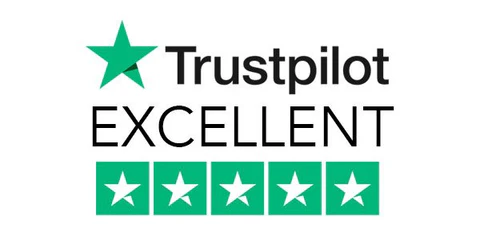In this guide, we will walk you through the simple process of setting Adobe Acrobat Reader as the default PDF viewer on Windows 11. Doing this ensures that all your PDF files open automatically in Acrobat Reader when you double-click them rather than opening in a different program. This can save you time and streamline your workflow. Follow the three easy steps below to get started.
Make Windows Open PDF Files Using Adobe Acrobat Reader
As you may have observed, PDF files are opened directly in the browser window when you access them from your computer, the internet, or an email attachment. This is because Microsoft Edge comes with its own built-in PDF viewer, eliminating the need to install a third-party PDF reader.
Although this arrangement suits many users, some prefer using dedicated PDF software and want their PDF files to open in Adobe Reader instead of the browser window. Fortunately, Windows 10/11 allows changing the default PDF viewer from Microsoft Edge to Adobe Acrobat or any other preferred PDF reader.
1. Always Open PDF Files Using Adobe Acrobat Reader
You can use the Default Apps section in the Settings menu. First, open up the Settings menu by searching for it in the Start Menu search, selecting it from the search results, or pressing Windows+i on your keyboard.

On the Settings window, click on ‘Apps’ from the left panel and then select ‘Default apps’ from the right panel.
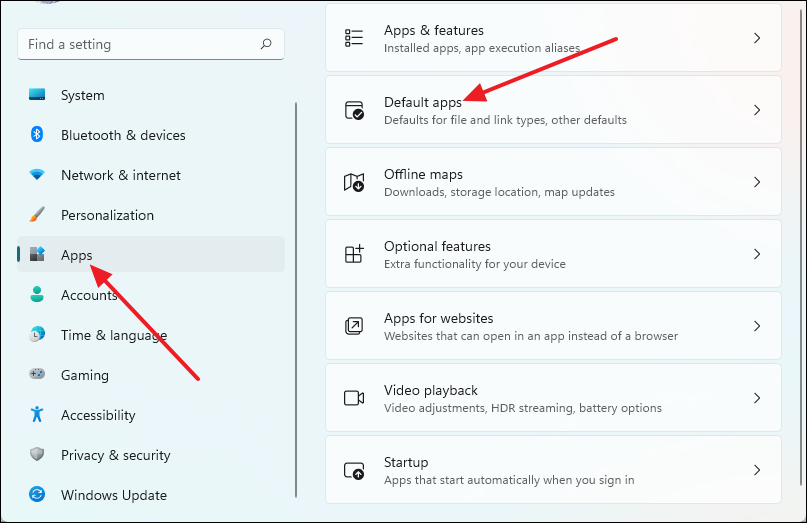
Now, scroll down and click ‘Choose defaults by file type’ under the Related settings section.
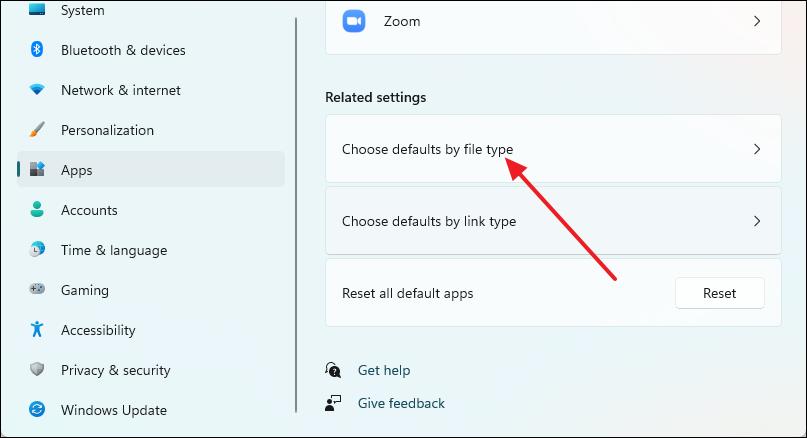
After that, type ‘.pdf’ inside the search box that is below the ‘Set defaults for file types’ text, and you will see that the default app option to open PDF files is set to Microsoft Edge.

Now, click on ‘Microsoft Edge,’ and from the ‘Before you switch’ dialog box, select ‘Switch anyway’.
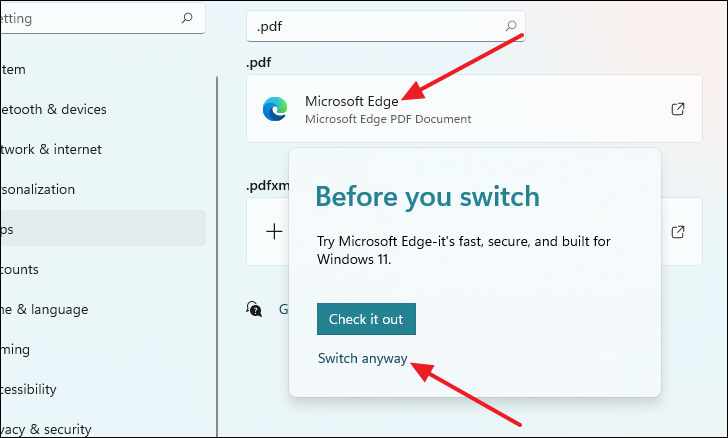
A new window called ‘How do you want to open…’ will appear. From there, highlight ‘Adobe Acrobat DC’ located under Other options and then click on ‘OK’, and it will be set as your default PDF reader.
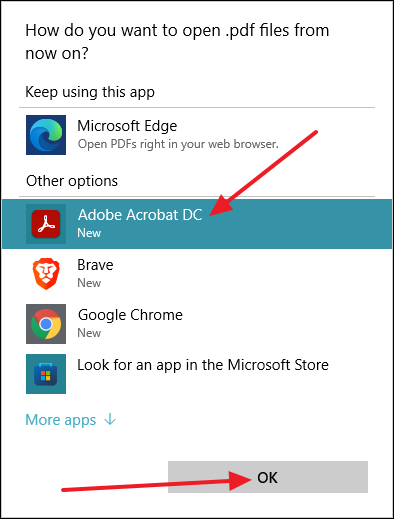
How to Set Adobe Acrobat as Default PDF Reader from the Properties Menu
If you do not want to go through multiple Settings menus, then there is an alternative method to set Adobe Acrobat as your default PDF reader.
You can go to the properties menu of any document file from the right-click context menu and set Adobe Acrobat as the default PDF reader.
First, locate the PDF file you want to open, right-click on it and then select ‘Properties.’
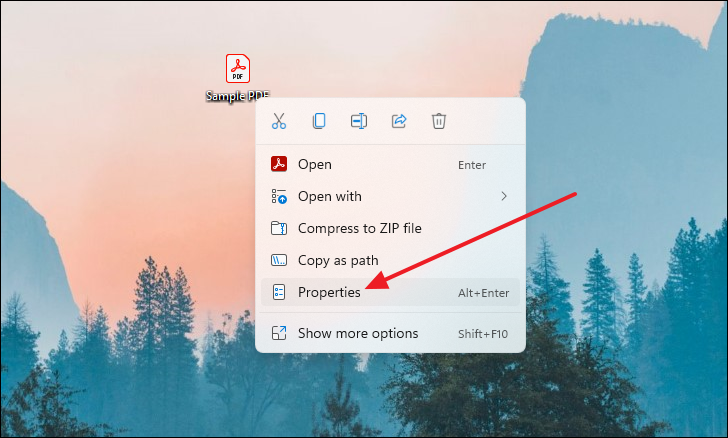
After the Properties window comes up, click on the ‘Change’ button next to ‘Opens with.’
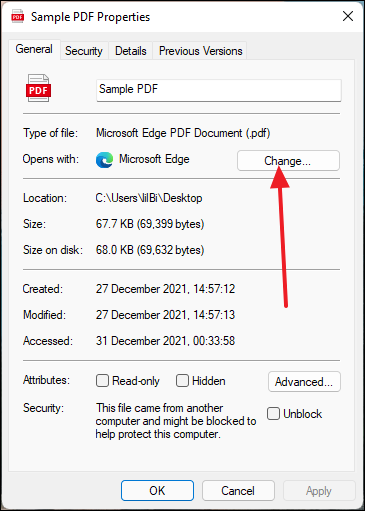
After that, another window called ‘How do you want to open .pdf…’ will appear. From there, select ‘Adobe Acrobat DC’ and click ‘OK’.
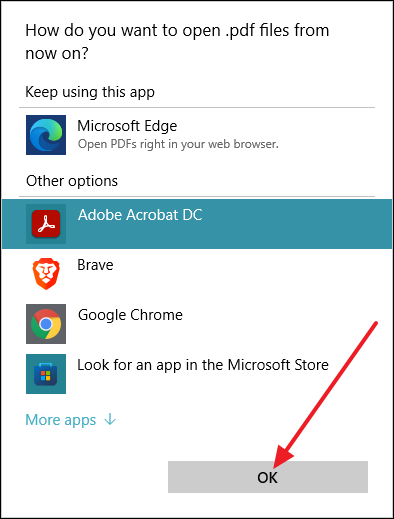
After you click on ‘OK,’ double-click on the PDF file to see that the Adobe Acrobat window will open, and now it has been set as your default PDF viewer application.
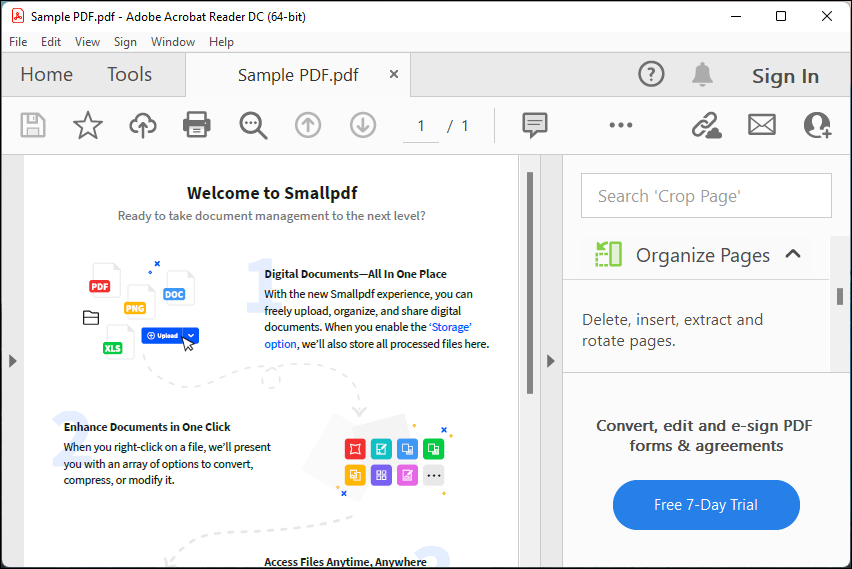
Conclusion
By following the three simple steps outlined in this guide, you can easily set Adobe Acrobat Reader as the default PDF viewer on your Windows 11 operating system. This will ensure that all your PDF files open automatically in Acrobat Reader, and you can enjoy its rich features and functionalities. Taking a few minutes to make this change can save you time and frustration in the long run and help you be more productive in your work. So go ahead and give it a try!
Did you like this article? Do not hesitate to share it on social networks and subscribe to Tech To Geek on Google News to not miss any articles!"Because of the Google update, I, like many other blogs, lost a lot of traffic."
Join the Newsletter
Please, subscribe to get our latest content by email.

